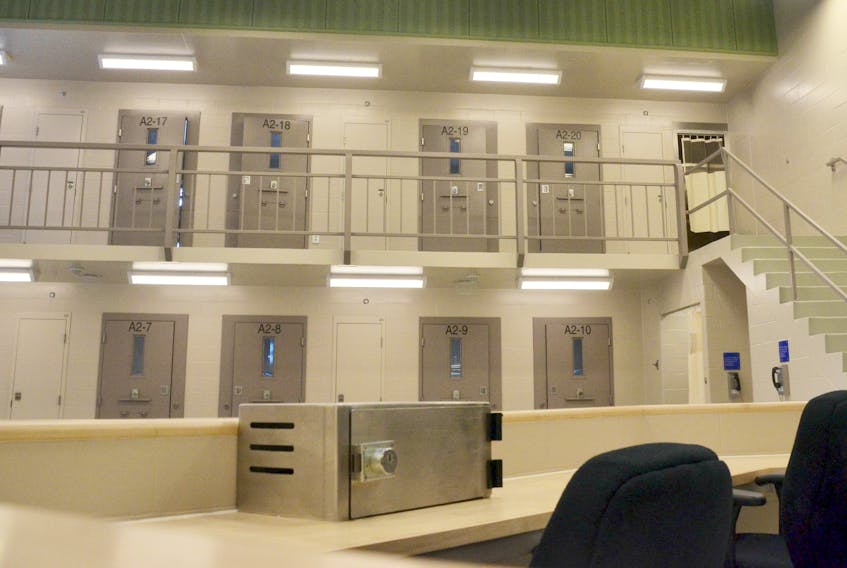A new direct supervision model in two of this province’s jails including the Northeast Nova Scotia Correctional Facility in Priestville, Pictou County, has many guards concerned for their safety.
The model removes barriers to the workstations used by guards, so they are open to inmates from both sides and no longer have protective glass barriers. In the direct supervision model, guards sometimes working alone constantly mingle with inmates.
“In the direct supervision model all the offenders are around you and they need you to do most things for them that they want to do,” said Jason MacLean, who worked as a corrections officer for 22 years and now represents them as president of the Nova Scotia Government and General Employees Union.
“There are dangers in that because you are cut off from the rest of your staff.”
Purpose built
According to an access to information request filed by The Chronicle Herald, the Department of Labour has investigated eight safety complaints from staff over the past year at the two jails that have implemented the direct supervision model — the Northeast Nova Scotia Correctional Facility in Priestville, and the Central Nova Correctional Facility in Dartmouth.
The Northeast Nova jail was built in 2015 and designed for the direct supervision model, while the older Central Nova facility is being renovated to accommodate it.
The complaints include four mass work refusals over safety concerns with direct supervision.
In June, 55 staff at Central Nova refused to work in West Day Room 5.
On Nov. 21, 2016, 24 officers refused to work in the Bravo 3 living space of the Northeast Nova jail, citing safety concerns. When an officer was reassigned to Bravo 3 from Bravo 1 living area to alleviate the guard shortage that had caused the initial refusal, more than 30 guards filed work refusals for Bravo 1.
Two days later there was another mass work refusal by 14 guards.
All cases were investigated by the Department of Labour, resulting in the redesign of the temporary direct supervision area in Central Nova and increased training.
Details of the incidents that sparked the work refusals were redacted from the response obtained under the Access to Information Act.
Shortages, not barriers
MacLean said the primary issue is a shortage of correctional officers and a bad relationship between staff and management.
“I’ve met with staff in other jurisdictions that thought the direct supervision model was well run and good, but it’s not well run here,” said MacLean.
“There should be two more staff working at any given time at the Northeast Nova facility to effectively run it.”
According to the Department of Justice, there have been six assaults on guards over the past year at Northeast Nova and 12 at Central Nova.
MacLean disputes those numbers – he claims to know of 12 assaults at Northeast Nova alone.
“You’re looking at everything from staff having stuff thrown at them to being punched in the mouth.”
He said the primary weapon of inmates is “s--t bombs.”
The projectiles are made by inmates defecating in a cup and then adding shaving cream. The mixture is thrown at a guard.
“The shaving cream is for the consistency,” explained MacLean. “So it sticks to you.”
Department of Justice spokeswoman Sarah Gillis said in a written response that the direct supervision model is considered “a best practice in corrections” and that managers are working with staff to address their safety concerns.
“The safety and security of our staff and those who use our facilities is our top priority,” said Gillis.
“We have developed a hazard risk assessment to address construction issues as they arise. We continue to work with the union and correctional staff to understand their concerns and ensure their safety in the workplace.”









